In the ASO Monthly-series by ASO Consultancy Phiture, we reflect on the previous month and shed a light on trends in app store optimization, algorithm changes, insights in conversion rate optimization and tools updates.
Subscribe to receive the ASO Monthly via email.
This update was written by Alessandra Izzo, an ASO Consultant at Phiture.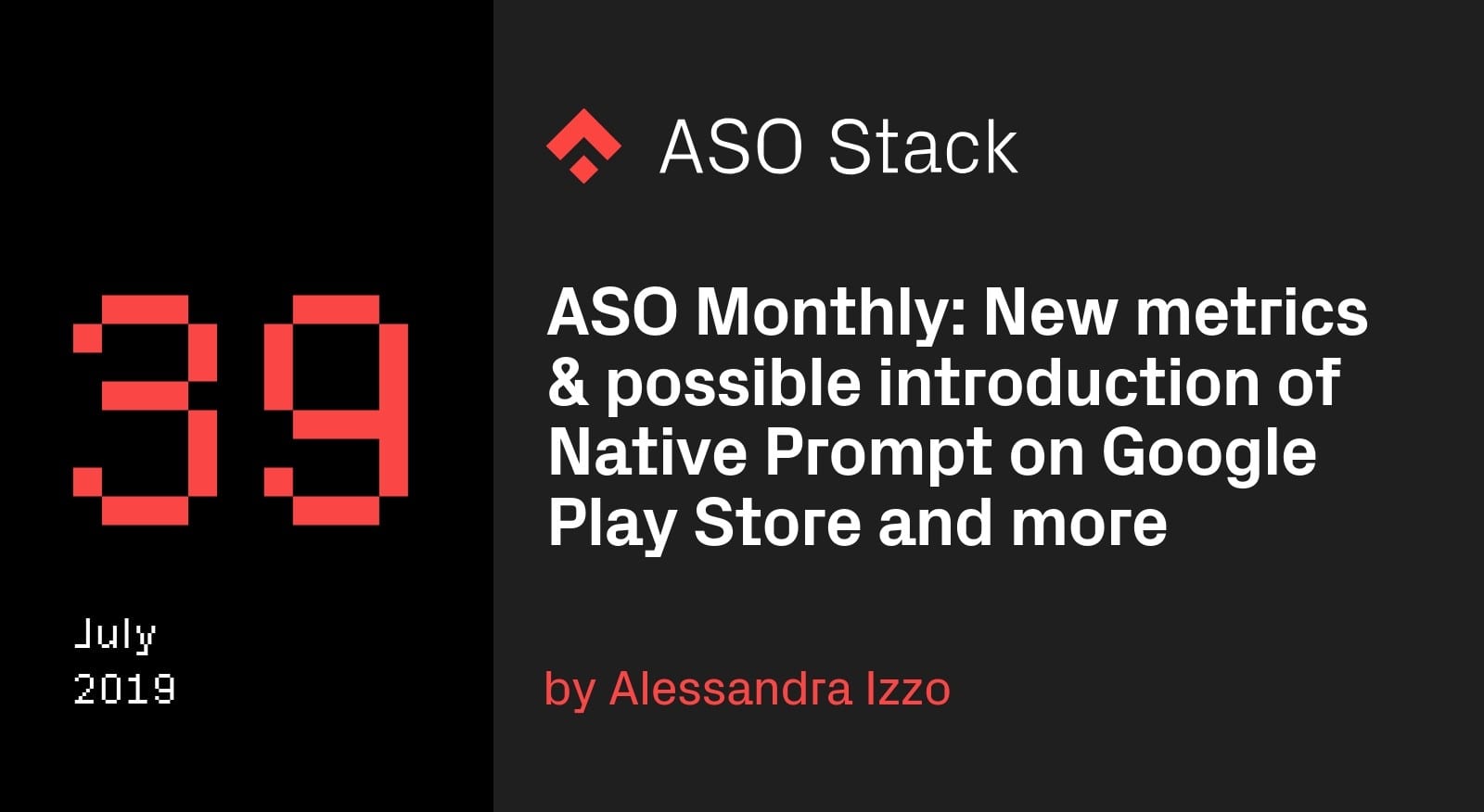
The ASO Conference 2019 is coming to New York! Are you ready for another great ASO conference with expert discussions on advanced ASO marketing strategies? Get an early bird ticket here!
July 1: Starting off on the right foot. The keywords ranking is back to normal after the June drop
We shared news of a new App Store search ranking algorithm test (or glitch?) at the end of June, which resulted in a drop off for many apps in the search rankings.
Members of our ASO Stack Community first assumed that the changes were limited to the Spanish (Mexico) localization, before realizing that the glitch was actually impacting on more locales. From July 1st, the effect was reverted and all apps were back to their original ranking.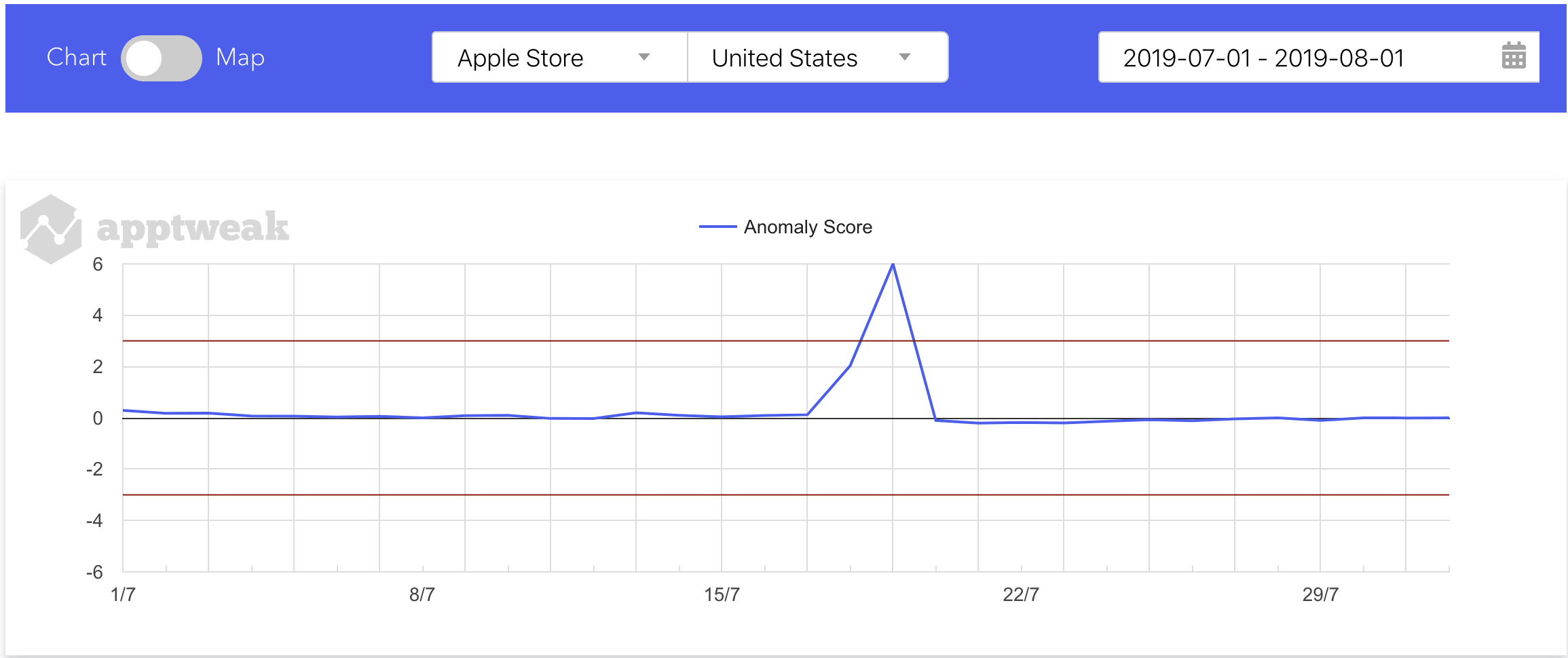
AppTweak — Algorithm Change Detector
July 3: A Video preview of Arcade available with iOS 13 developer beta 3
Apple has publicly released the third beta version of iOS 13 and iPad OS 13 and the preview of Arcade, the company’s gaming subscription service caught our attention in particular.
In the previous beta versions, developers only had access to a video when clicking on “Arcade”. With iOS beta 3, developers now have access to the video preview, additional Arcade information, and links to sign up for a notification when Arcade will be ready for release later this fall.
The new gaming service, with its selection of high-grade and ads-free apps, will help Apple to deflect attention away from poor-quality and semi-cloned games and become a major player in gaming. The competition in the game ecosystem is expected to increase and game developers, who can’t count on the Arcade visibility, will have to rely on ASO even more in order to have their apps discovered by users.

Source: ios.gadgethacks
July 3: Apple shares the figures for App takedown requests by different governments
Apple regularly publishes transparency reports that detail which countries request data on their users and how often.
The latest publication comes with a new section where the tech giant reveals for the first time figures on App takedown requests by different governments.
The report states that, from July 1 and December 31, Apple received 80 requests from 11 countries to remove 634 apps from its localized app stores.
The majority of takedown requests came from the Chinese government asking for the removal of 626 apps that violated the country’s pornography and illegal gambling laws. The second-highest number of app takedown demands came from Norway’s government (with 37 apps) for illegal gambling investigations. Saudi Arabia came in third with 25 requests, mostly tied to violations of privacy laws.
The entire breakdown of the countries that requested app removals from the App Store can be found in Table 13 of the report.

Source: Apple
Apple didn’t list the apps that were removed but the reasons why the apps were pulled and it stated that, in total, it granted 75 of the 80 app takedown requests it received.
July 10: Chinese state media criticizes Apple’s App Store for allowing fake app reviews.
We now all know that a majority of consumers consider ratings and reviews before downloading an app, hence explaining why some developers use black hat with fake reviews — which are not always detected by anti-spam systems.
Posting fake five-star reviews and paying to boost rankings remain common ways for software developers to get quick exposure. To highlight this problem, China National Radio has published a report that denounces Apple’s App Store for the large number of fake app reviews and for not being able to take action against this problem. According to Abacus:
The report argues that the App Store has “serious problems” with fake reviews and apps designed to scam people, and claims Apple doesn’t seem to know what to do about it.
The report cites two examples of iOS users buying apps that showed up at the top of search results and had many five-star reviews. However, they were found to be virtually unusable.
This could explain why ASO Stack community member Ilia Kukharev reported having observed the removal of 100–200 positive reviews overnight on July 24.
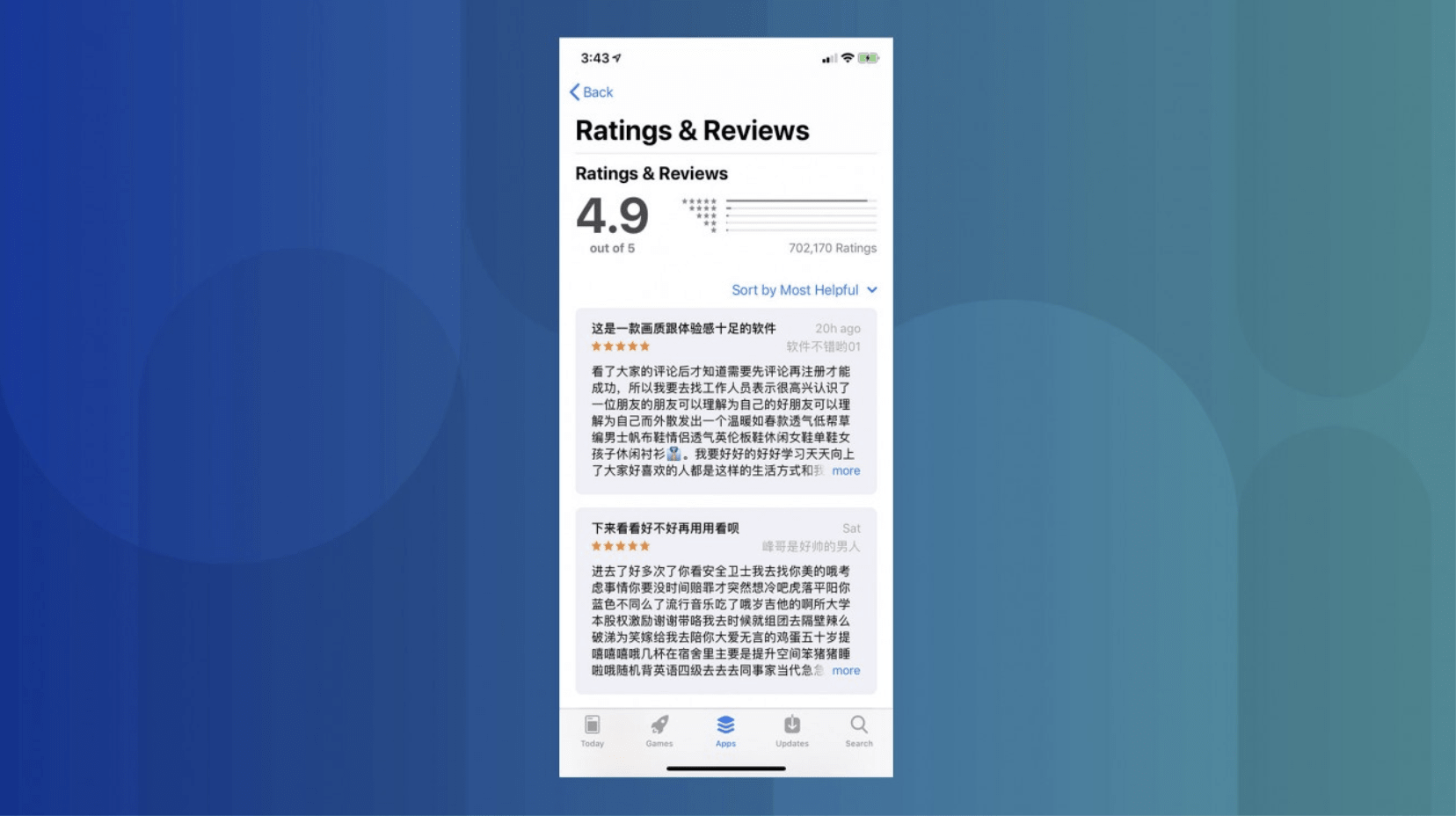
Source: Abacousnews/ Five-star reviews with comments unrelated to the app (Common issue in China’s iOS App Store).
July 17: Google and Apple reveal new emoji for World Emoji Day
Apple publicly announced that day that 59 new emojis are set to ship with iOS 13 later this fall, while Google revealed 65 new designs are coming to with the release of the new Android Q at the end of September.
With the addition of this huge number of new emoji coming to Android Q this year, we expect to see more apps placing emoji in the Play Store’s textual elements. We have already shared an article where we explained how rich formatting and emoji can grab users’ attention when they browse or search the Play Store, improving readability and enhancing conversion rate.
Among other changes, both companies seem to have decided to reduce gender imbalances and increase skin color diversity in their future emoji. Android users can expect to have 71 couple combinations of various skin tones, as well as “gender-ambiguous” designs to choose from. This is an opportunity for ASO practitioners to localize further their app pages!

Source: Apple Newsroom
Apple, meanwhile, doesn’t allow using emoji in the product listings although, after iOS 12, the updated App Store Review Guidelines state: “4.5.6 Apps may use Unicode characters that render as Apple emoji in their app and app metadata. Apple emoji may not be used on other platforms or embedded directly in your app binary.”
The Tool explained that it’s possible to add emoji to the Keywords Field and show up as a result of an emoji search. Due to the low popularity of emoji search on the App Store, this tactic shouldn’t help apps to get more downloads for now but emoji could become more relevant in any search engine in the future.
July 18: New App Store keyword algorithm update
If you’ve seen your massive movements in keyword ranks across all keywords around July 17th and 18th, you’re not alone.
As spotted by some members of the ASO Stack Slack Community, Apple appears to have released a new algorithm update, changing ranking trends across keywords.
Marie-Laure from Apptweak shared a screenshot of the Apptweak Algorithm Change Detector showing the anomaly score going up on the 17th of July.
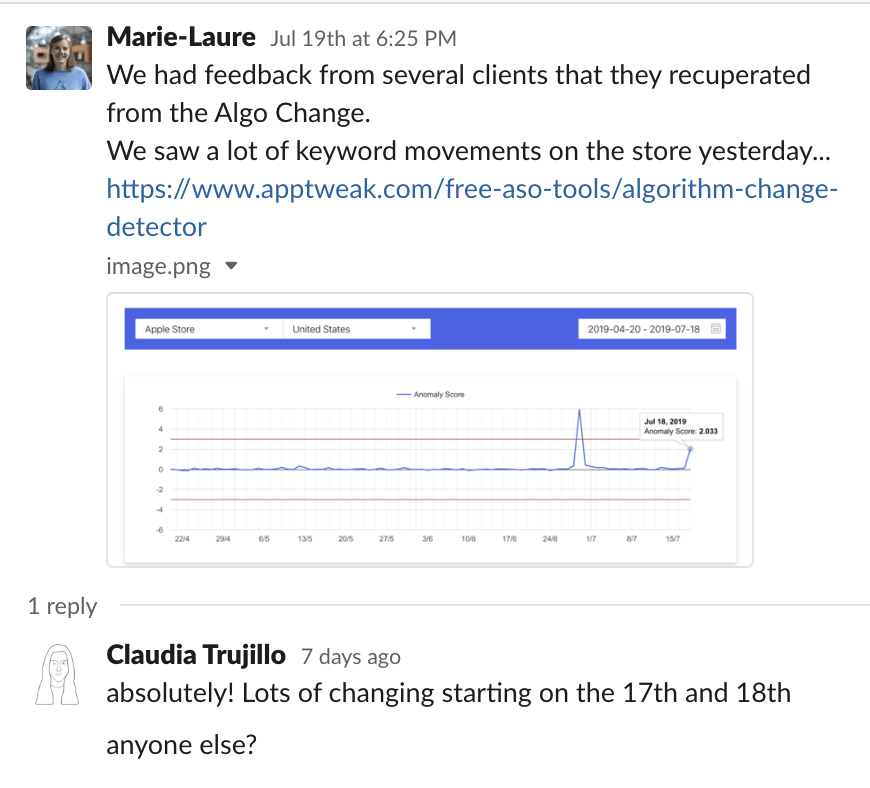
Source: ASO Stack Slack Community
Furthermore, it seems that this time of the algorithm update also affected the visibility of apps in pre-order status as confirmed by some other ASO Stack members.
July 23: Apple dominance over the App Store search results
More accusations of unfair practices have been aimed at Apple after the recent case that saw the tech giant from Cupertino releasing a new page on its website about the App Store and its “principals and practices” to counter claims of monopoly.
The Wall Street Journal published a report showing how Apple is manipulating the search results and puts its own apps first in 60% of the App Store’s categories and in 95% of Apple subscription or sales-generating categories, surpassing equivalent offerings from Amazon and Google.
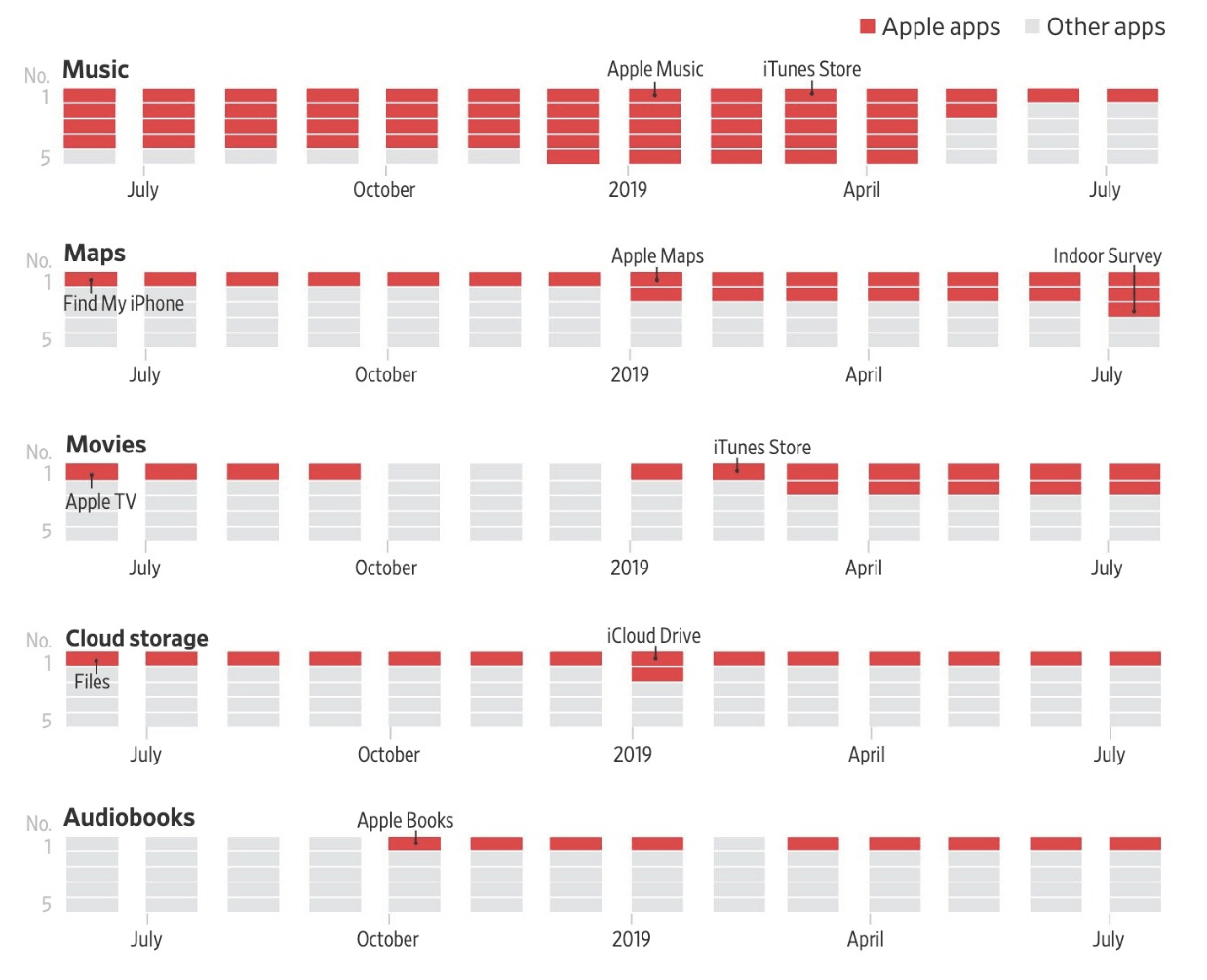
Source: Wall Street Journal
In response to the accusations, Apple claims that they use a 42-factor system to determine apps search ranking, including name matches, downloads, ratings, relevance, user behavior, but refuses to divulge information on how the algorithm works to prevent search results from being manipulated.
July 25: Google might introduce in-app reviews for the Play Store
After the overhaul of the Google Play Store rating announced at I/O 2019 (prioritizing recent reviews first) Google could now be working on a new feature that will let users rate Play Store apps through an in-app dialog (Source).
The new workflow will increase the likelihood of someone leaving a review and will possibly lead to more positive reviews of apps if implemented correctly.
July 26: New month, new aspects of the long-awaited Material Theme Play Store redesign revealed
The Material Theme Play Store is likely Google’s most awaited redesign and thanks to the new APK teardown for the Play Store update 16.0.15 made by 9to5google, new interesting aspects have come to light. It adds a new rearrangement of elements and the Google Sans font as well as a new interaction to the “Install” button after the tap. The full-width green button smoothly changes into the ‘Open’ and ‘Cancel’ buttons as you can see in the video below.
This animation works in conjunction with the circle that has already been spotted around the app’s icon that fills up as the download advances.
The developer-page was also given a new look.
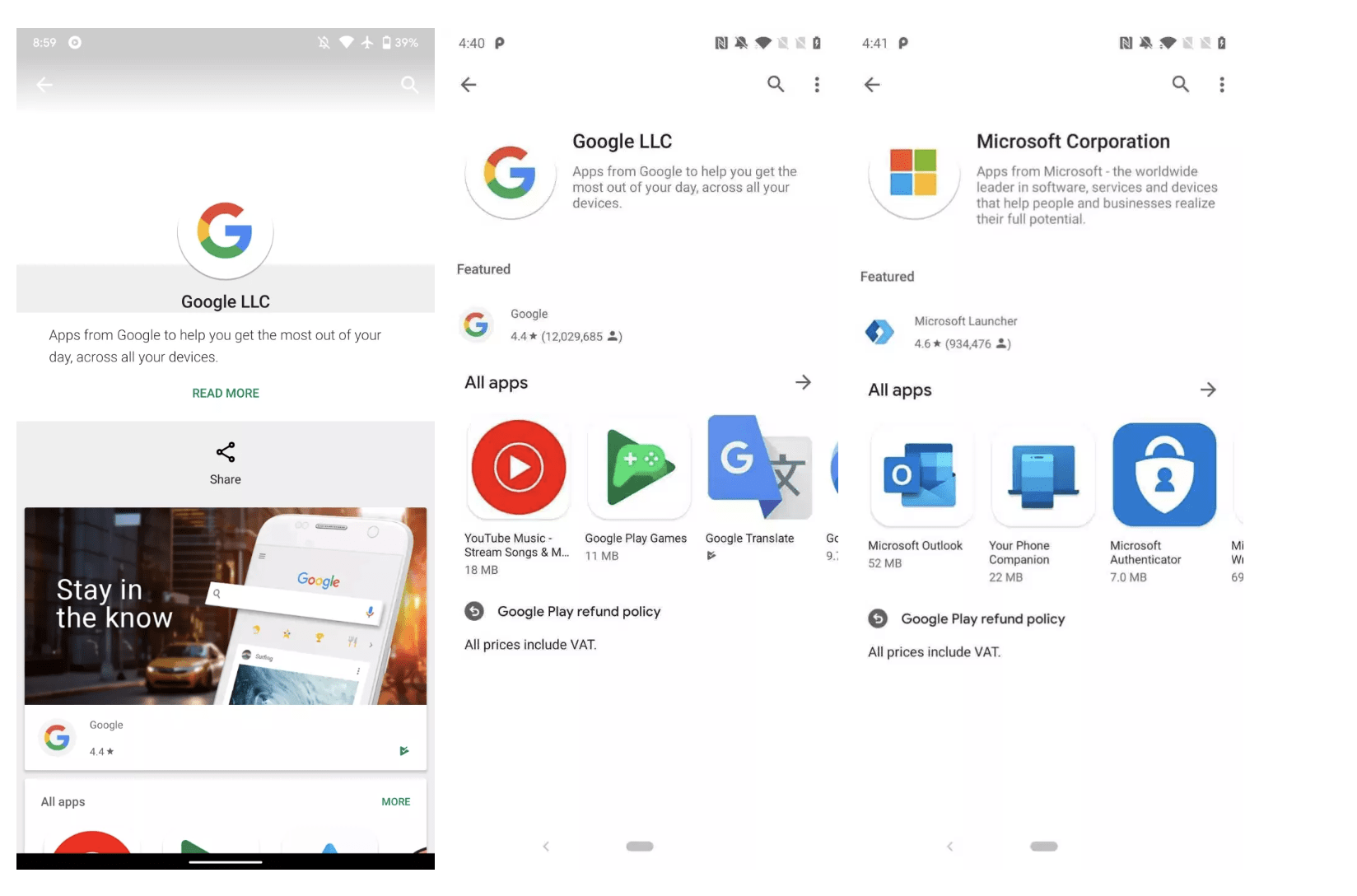
Source: 9to5google
The cover image has been removed and the developer’s logo, name, and description are positioned at the very top. Right after the page, the featured app and a carousel of apps published by the same developer are displayed.
- Auto-play video
Videos shown in the Play Store’s homepage might auto-play in the future leaving the users the option to disable it in settings.
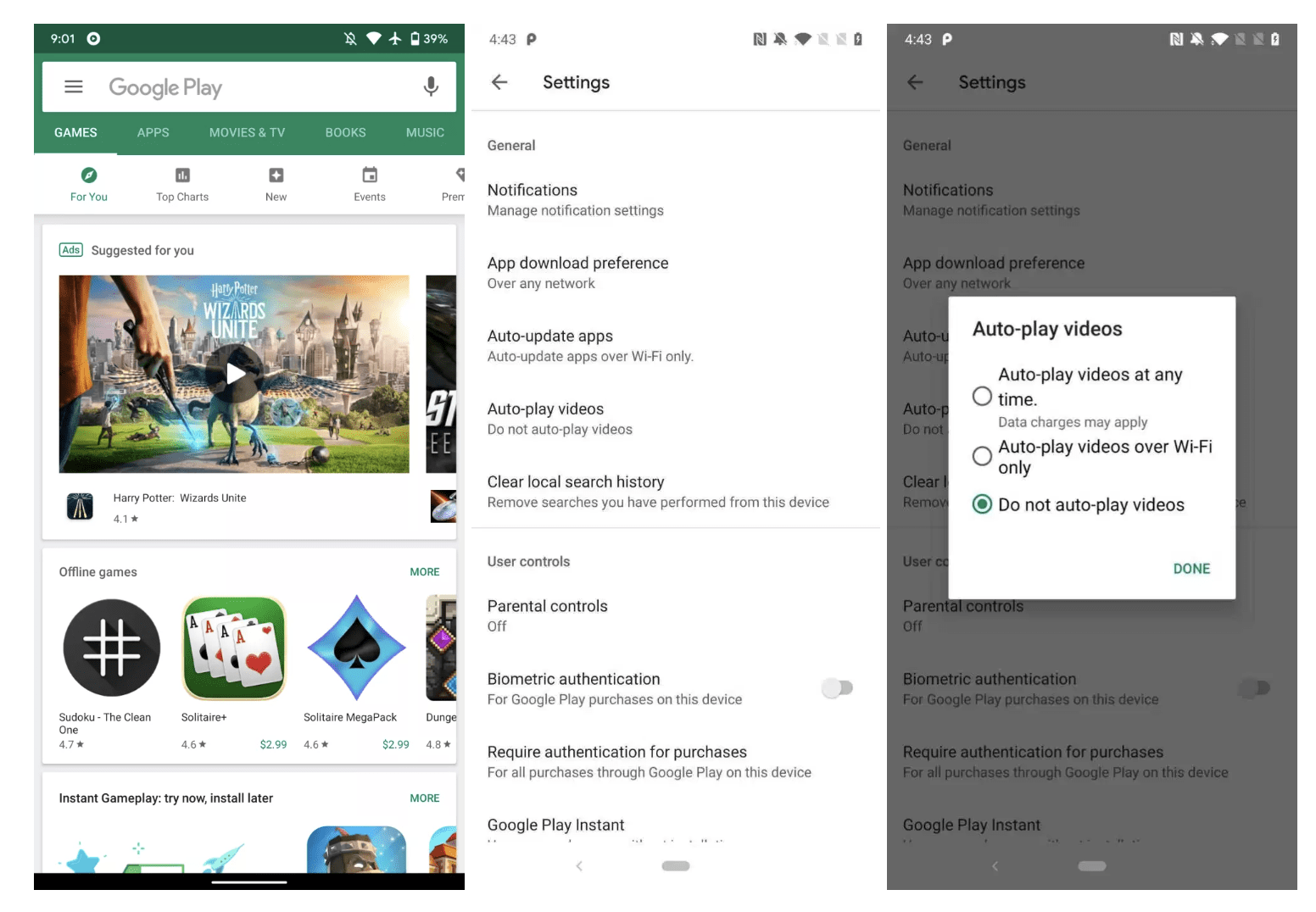
Source: 9to5google
Hopefully, we’ll see a wider rollout soon but, as usual, it is not guaranteed that all these features will ever actually be made available to all users.
July 31: Google Play giving developers new data on returning users, devices, and install methods.
A new update to the Google Play Developer Console has been released and provides developers with more insights for their analysis on acquisition and churn.
Specifically, the Statistics page is enhanced with more granular configurations and new data on returning users, devices, and install methods (such as pre-installs and peer-to-peer sharing).
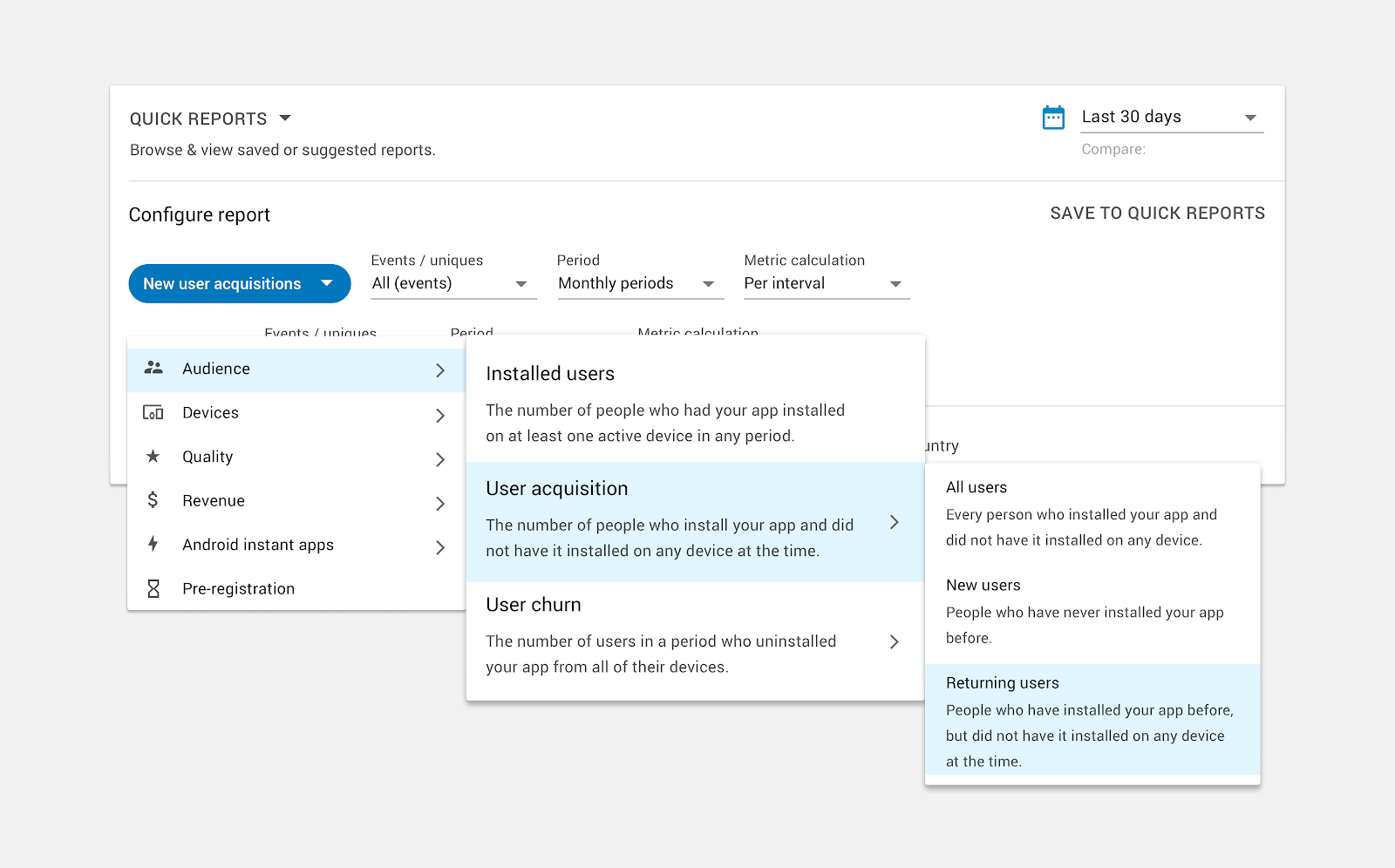
Source: Android Developers Blog
Other relevant changes listed in the Android Developer Blog are:
Clearer, consistent metrics definitions:
– Select users or devices, acquisitions or losses
– Define if you’re interested in new, returning, or all users
– Measure events (for example, when someone installs) or uniques (for instance, every person who installs)
Change analysis charts automatically show the largest changes during a selected period of time for a given dimension, making it easy to see the largest contributors to your metric trends.
Saved reports allow you to configure your metrics just the way you want them, then save them for easy retrieval and common analyses.
Suggested reports help you to find interesting ways to combine your data for more valuable analysis.
And finally, all configured data can be downloaded as CSVs from within the interface.
Note that this update will result in a few changes to metrics and it’s important to check the documentation provided by Google for information on how to manage the transition and familiarize with the new metrics.
Thanks for reading! Feel free to connect with our team at Phiture on Twitter, or join the conversation in our ASO Stack slack channel.
Upcoming events in August
AppsFlyer’s MAMA São Paulo (São Paulo, BR, 6th August)
Mobile Growth Summit Canada 19( Toronto, CA, 15th August).
More Mobile Growth events can be found in our list here!












